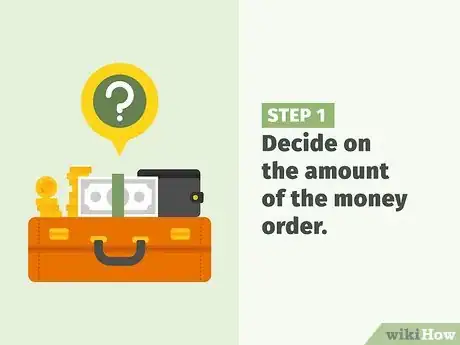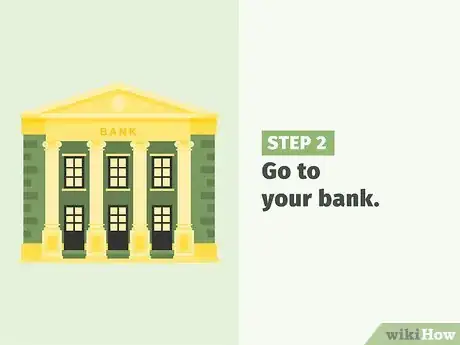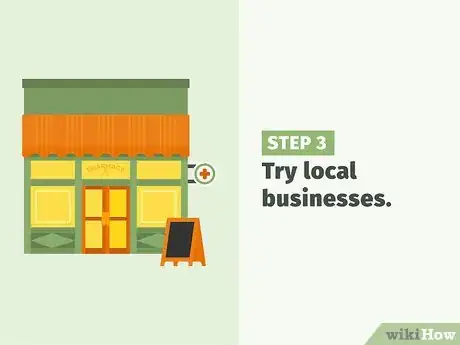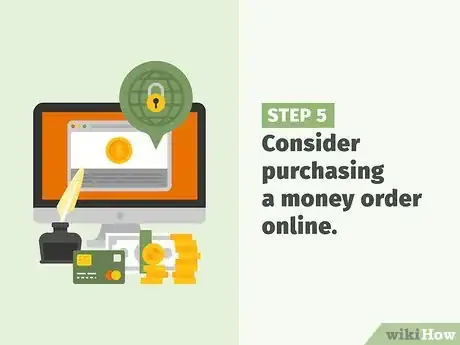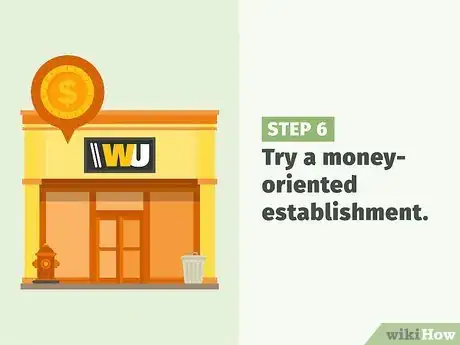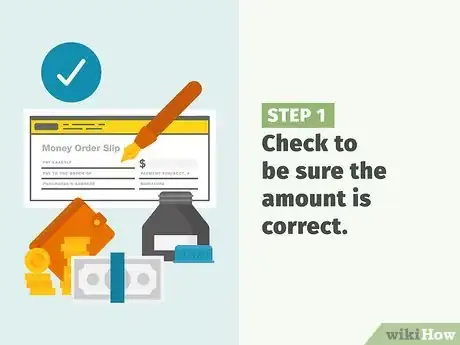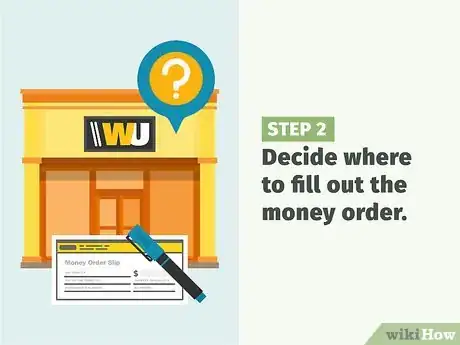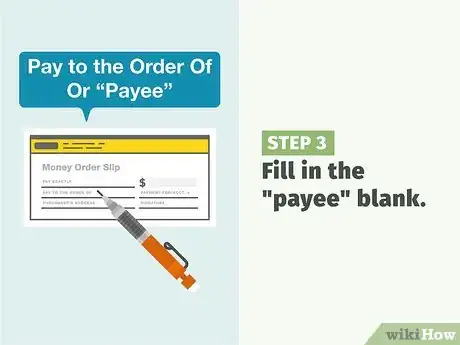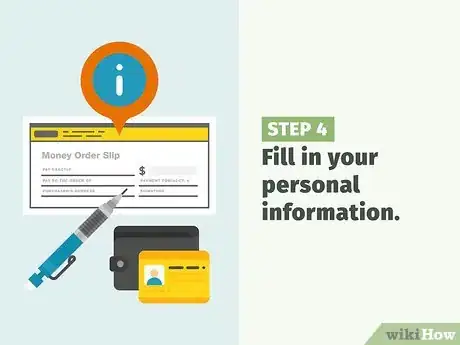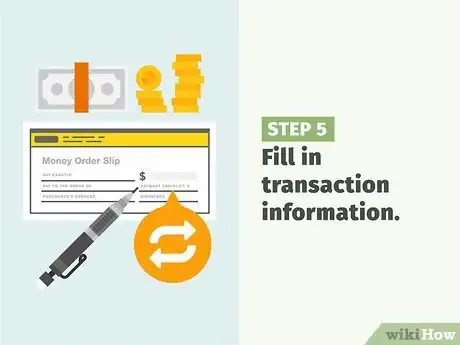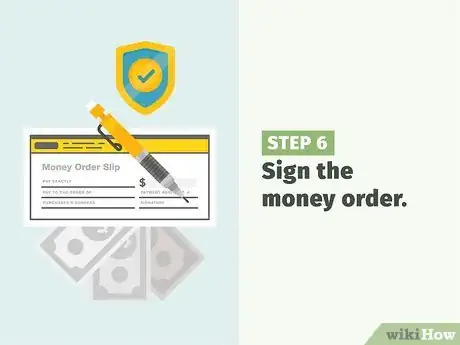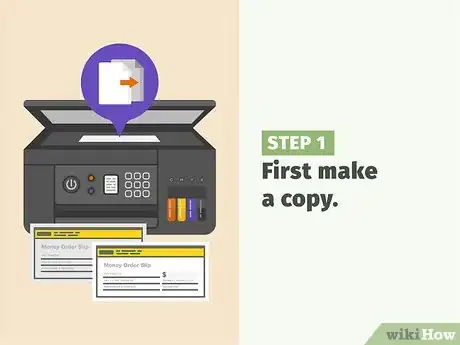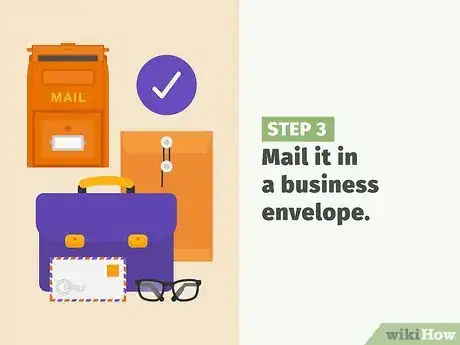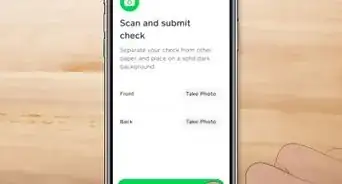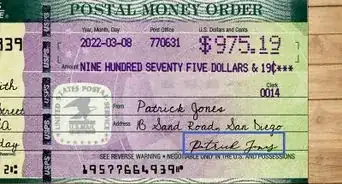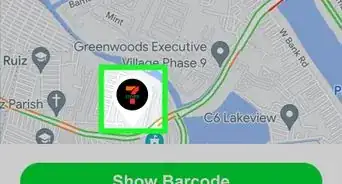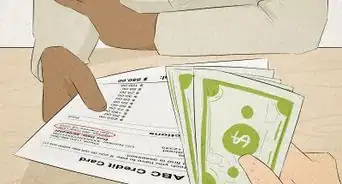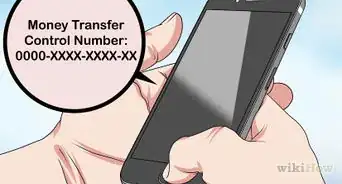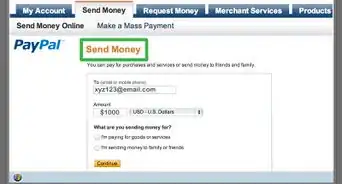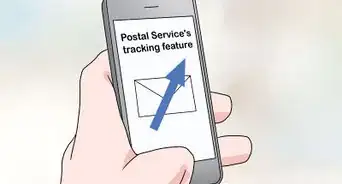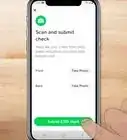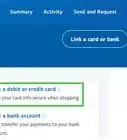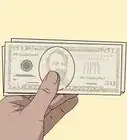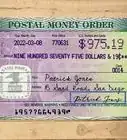This article was co-authored by Gina D'Amore. Gina D'Amore is a Financial Accountant and the Founder of Love's Accounting. With 12 years of experience, Gina specializes in working with smaller companies in every area of accounting, including economics and human resources. She holds a Bachelor's Degree in Economics from Manhattanville College and a Bookkeeping Certificate from MiraCosta College.
This article has been viewed 940,974 times.
Money orders are used instead of checks or cash when you need to make a payment. Unlike checks, money orders can never bounce, making them a safer option for large payments. This wikiHow will teach you how to get a money order for your next payment!
Steps
Obtaining a Money Order
-
1Decide on the amount of the money order. Many establishments will ask you to pay for the money order in cash. In some cases you will be able to pay with a credit or debit card.
-
2Go to your bank.[1] If you have a bank account, the easiest way to obtain a money order is to go to the teller and ask for one.
- Some banks may charge a small fee, but many offer money orders for free.
- Some banks offer cashier's checks, which are similar to money orders. Make sure the recipient will accept a cashier's check before buying one instead of a money order.
- Banks offer the benefit of keeping a record of your money order purchase, which could come in handy in the event that the money order gets lost.
Advertisement -
3Try local businesses. Drugstores, grocery stores, and places like Walmart offer money orders for a fee. Visit a few different places and choose the one with the lowest fee.[2]
- Some establishments have a limit on the amount of the money order. If there is a cap, simply purchase more than one money order until you have the total amount you need.
- This is a good option if you need to transfer the money and there's no bank open or nearby.
-
4Try the post office. Money orders issued by the United States Postal Service are usually replaceable if they are lost, stolen or damaged.[3] The following benefits also apply to money orders purchased from the USPS:
- They can be purchased with debit cards.
- They are cashable in 29 other countries.
-
5Consider purchasing a money order online. If you'd rather not purchase a money order in person, an online vendor might be a convenient choice. However, online companies usually charge steeper fees than local establishments. The leading online money order company is Payko, which caps daily money order purchases at just $200.
-
6Try a money-oriented establishment. Western Union, credit unions, and other places that handle money usually issue money orders.[4]
Filling Out the Money Order
-
1Check to be sure the amount is correct. The establishment that issued your money order will have printed the amount on the money order slip. Double check to make sure it's right before you end the transaction.
-
2Decide where to fill out the money order. You may want to fill out the money order on the spot, rather than carrying it to another location. If the money order lands in someone else's hands before it is filled out, that person could fill in their own name and cash it.
- If you do carry the blank money order to another location, keep in in a safe place on your person. When you get home, put it in a place where it won't get lost.
-
3Fill in the "payee" blank. The first blank to fill in will say "Pay to the Order of" or "Payee." This is where you write the name of the person or company to whom you are giving the money order.[5]
- Use black or blue non-eraseable ink to fill out the money order.
-
4Fill in your personal information. Some money orders will have a space for you to fill in your name and address or other information.[6] If you wish to fill this out, do so in blue or black ink.
-
5Fill in transaction information. You may want to add details about the nature of the transaction, such as the name of the item you are paying for.
-
6Sign the money order. If there's a space for you to sign the money order, you may do so, although it can still be cashed without your signature.
Paying With a Money Order
-
1First make a copy. Since money orders are often used to pay people you may not know well, it's good to keep a personal record of the money order in case a problem arises. Make a copy of the money order and file it with your financial records. Keep it with the receipt that came with your money order.
-
2Hand it over in person. The best way to pay with a money order is to give it directly to the recipient. This eliminates the chance that it will get lost or tampered with by a third party.
-
3Mail it in a business envelope. If you're mailing a money order, make sure it's in a security envelope, rather than a letter envelope. Packaging it discreetly will prevent someone else from getting curious and attempting to tamper with the money order.
Community Q&A
-
QuestionIf I make a mistake, can I change the name of whom I made the money order out to?
 Community AnswerNo. Call the money order in -- go to the store where you purchased the money order and have them replace it for new one.
Community AnswerNo. Call the money order in -- go to the store where you purchased the money order and have them replace it for new one. -
QuestionDo I need an ID?
 Community AnswerMany times, banks will require you to bring an ID as proof you are the account holder. The person/institution you are paying may not require this ID for payment.
Community AnswerMany times, banks will require you to bring an ID as proof you are the account holder. The person/institution you are paying may not require this ID for payment. -
QuestionCan I use a credit card to get a money order?
 Community AnswerYes. Any debit, credit, or prepaid debit cards are accepted by the post office as long as they still have sufficient chargeable credit left on them.
Community AnswerYes. Any debit, credit, or prepaid debit cards are accepted by the post office as long as they still have sufficient chargeable credit left on them.
Warnings
- Fill out the money order carefully; if you make a mistake and have to void it, there will be an extra fee to buy a new one.⧼thumbs_response⧽
References
- ↑ https://www.thesimpledollar.com/banking/blog/how-do-money-orders-work/
- ↑ https://www.thesimpledollar.com/banking/blog/how-do-money-orders-work/
- ↑ https://www.usps.com/shop/money-orders.htm
- ↑ https://wallethacks.com/how-to-buy-money-order/
- ↑ https://www.nerdwallet.com/blog/banking/how-to-fill-out-money-order/
- ↑ https://www.nerdwallet.com/blog/banking/how-to-fill-out-money-order/
- https://www.usps.com/shop/money-orders.htm
- http://money.howstuffworks.com/personal-finance/online-banking/money-order-online1.htm
About This Article
Before getting a money order, you need to know exactly how much the amount will be for. Visit your bank, post office, or a local grocery or convenience store to purchase your money order. When you purchase it, tell the store how much money you want the money order to be for, and then pay them in cash, debit, or credit depending on their policy. To fill out the money order, write the name of the person or business you're paying in the “Payee” space and sign the document. Keep reading to learn how to pay with your money order!
